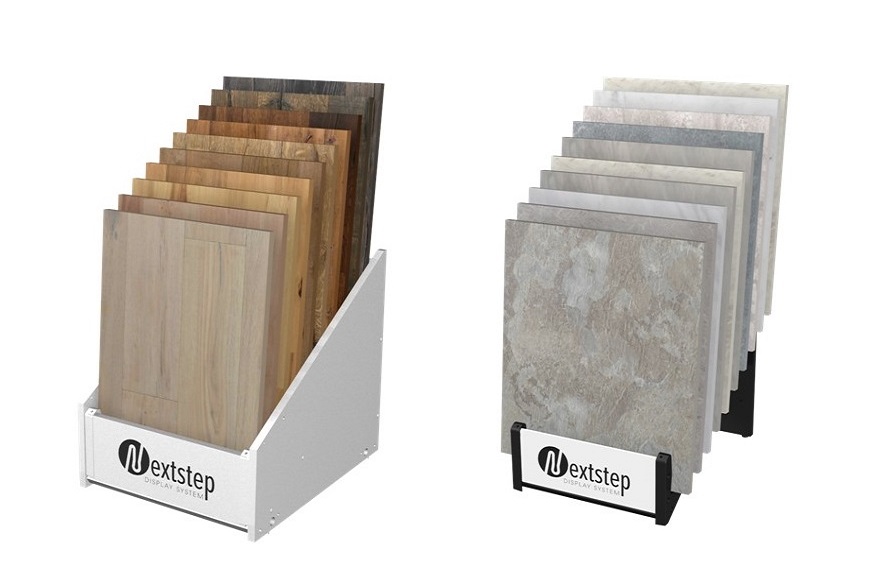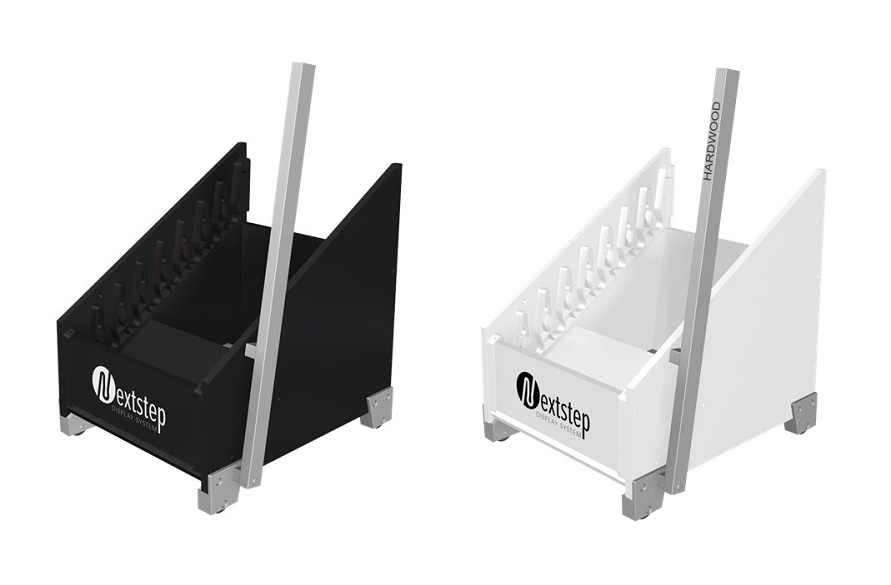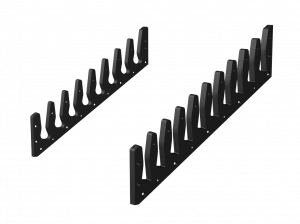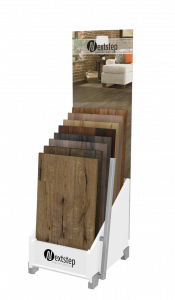NextStep™ – Reimagining the Flooring Step Display
If you’re not making it better, what’s the point? That guiding principle may be what led General Mills to add a new marshmallow to Lucky Charms cereal in 2018 – a purple unicorn. But we know it’s what drives most of our projects, particularly the displays and fixtures we design for customer retail programs. Here’s a simple example of that principle in play. And a story of how we took a stale, commodity component of the retail programs of our customers who sell flooring and turned it into an important part of the brand experience they offer shoppers.
Flooring Step Displays
You might not know what a flooring step display is, but if you’ve ever been in a flooring store you’ve seen them. They’re all over most flooring stores – and for a good reason. They don’t take up much space and they’re an inexpensive way to display large samples of hard surface flooring – like wood, luxury vinyl tile (LVT), stone and tile.
Now we’re a custom design company – so commodity displays like steps aren’t our focus. But we couldn’t help noticing that some of our customers were unhappy with the step displays they were buying elsewhere. So, we decided to see if we could help. We started by taking a closer look at the issues they were having. And there were lots of them. Here are five examples:
- Most step displays are made of particle board with slots cut in it like “teeth” to hold the flooring samples upright. These slots allow the samples to flip forward and back for easier browsing. So overtime the teeth between the slots break and that’s the end of your step display.
- When a step display is placed against a wall – and many are, it’s hard for a shopper to “shop” the samples towards the back. And since most samples are really heavy, trying to remove one to look at it can literally be dangerous.
- Flooring stores love to move stuff around their showrooms. But to move a step display filled with heavy wood or tile samples, the retailers have to unload it, move it, then reload it. No fun.
- Step displays are made to hold a fixed number of samples. So if a manufacturer wants to grow their program and add a couple of samples, they have to add another display, build a new, bigger one or replace their current samples with new ones made up of two half-sized samples.
- Finally, storytelling is important. In today’s showrooms where almost all hard surface flooring – no matter what it’s made of – looks like wood, tile or stone, helping people understand what they’re looking at and what makes it different and better is important. Step displays typically don’t offer much, if any, space for explaining anything. A real limitation.
Introducing NextStep™
So now we knew the issues. The question then became could we solve them affordably? So we began a design exploratory and quickly decided that, yes, we could. Here are some of the innovations we made in what came to be called our NextStep™ display program.
- First, we designed and patented a super-durable ABS (hard plastic) injection-molded rail that replaces the slots or “teeth” typically used to hold samples (see image). Virtually unbreakable, these rails come with the customer’s choice of 8, 10 or 12 slots – and if a manufacturer needs to add samples, NextStep offers options that allow slots to be added to without having to replace the display. This flexibility, coupled with the durability of the rails, dramatically increases a display’s effective lifespan.
- We created an optional wheel kit and handle that can be added to any NextStep display (see images above). Together these let shoppers easily pull the display out from the wall to safely browse samples in the back. At the same time, they make it easier for retailers to move displays around their showroom.
-
We created a number of customizable add-on graphic options that allow customers to more effectively brand their displays and tell their stories. Like the low-cost backer graphic kit shown (see image)
- We also created two types of NextStep displays (see images of both above). “Ramps” can accommodate a wide range of sample widths – giving manufacturers the flexibility to switch sample sizes over time. “Boxes” are designed to hold samples of only one width. And because the sides of the box force samples into a neat row, they create a better-looking instore sample presentation.
So how did we do overall with our redesign? Customer response has been overwhelming. Just as important we’ve elevated the status of step displays within customer programs – turning them from a convenient, necessary evil into an important part of their brand experience they offer floor shoppers. If you are interested in learning more about our NextStep program and the customization options we offer, please contact Robert Leavens at rleavens@artguildinc.com.



